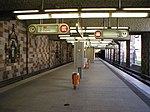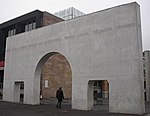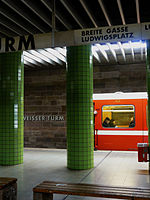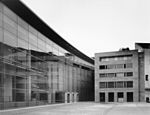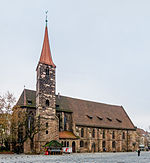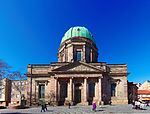Nuremberg Transport Museum
Deutsche BahnMuseums in NurembergRailway museums in BavariaRailway museums in GermanyTransport in Nuremberg

The Nuremberg Transport Museum (Verkehrsmuseum Nürnberg) is based in Nuremberg, Germany, and consists of the Deutsche Bahn's own DB Museum and the Museum of Communications (Museum für Kommunikation). It also has two satellite museums at Koblenz-Lützel (the DB Museum Koblenz) and Halle (DB Museum Halle). The Nuremberg Transport Museum is one of the oldest technical history museums in Europe. In February 2007 the official name of the DB Museum became the Company Museum of the Deutsche Bahn AG (Firmenmuseum der Deutschen Bahn AG). It is a milestone on the European Route of Industrial Heritage (ERIH).
Excerpt from the Wikipedia article Nuremberg Transport Museum (License: CC BY-SA 3.0, Authors, Images).Nuremberg Transport Museum
Lessingstraße, Nuremberg Tafelhof
Geographical coordinates (GPS) Address Website Nearby Places Show on map
Geographical coordinates (GPS)
| Latitude | Longitude |
|---|---|
| N 49.445556 ° | E 11.074444 ° |
Address
Tinto Tapas y Vino
Lessingstraße 6
90443 Nuremberg, Tafelhof
Bavaria, Germany
Open on Google Maps

